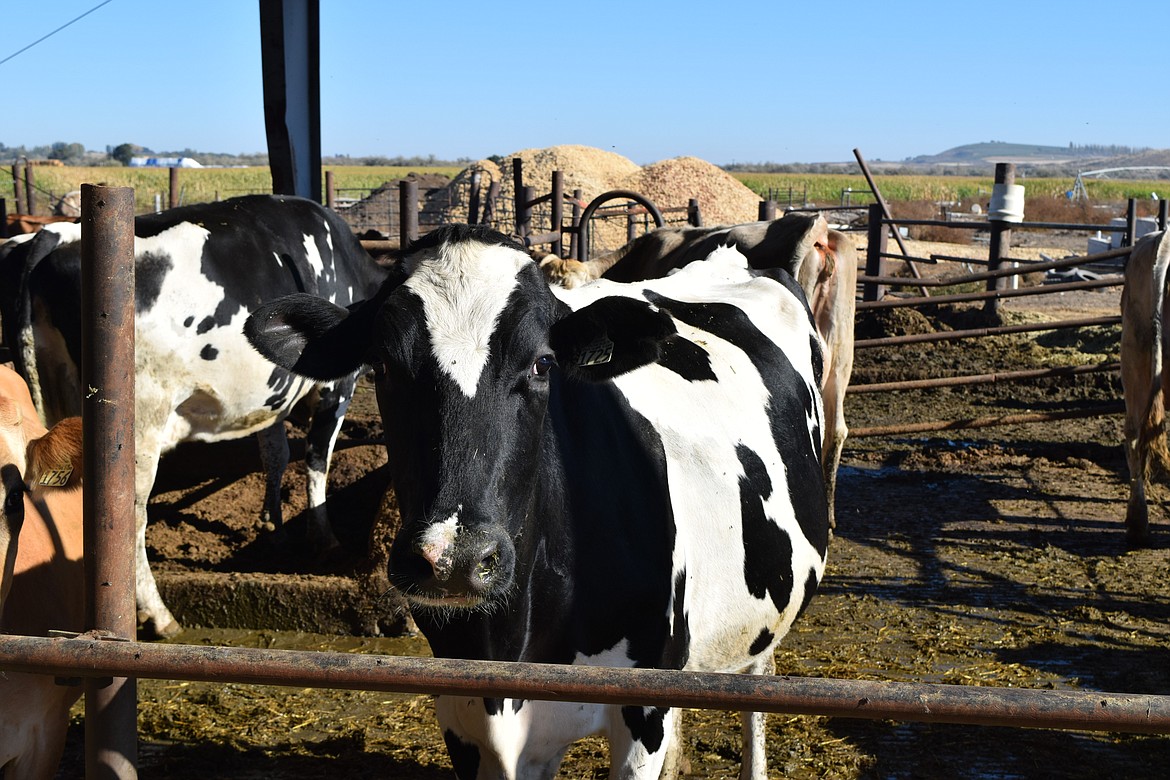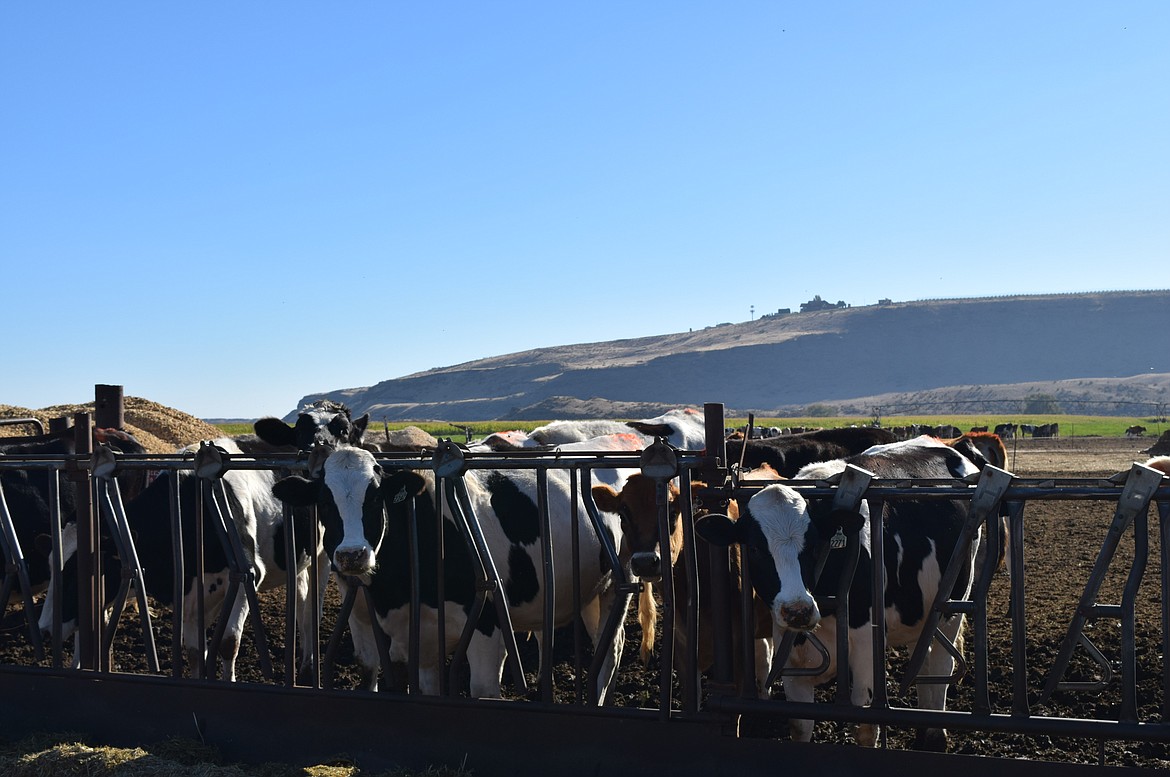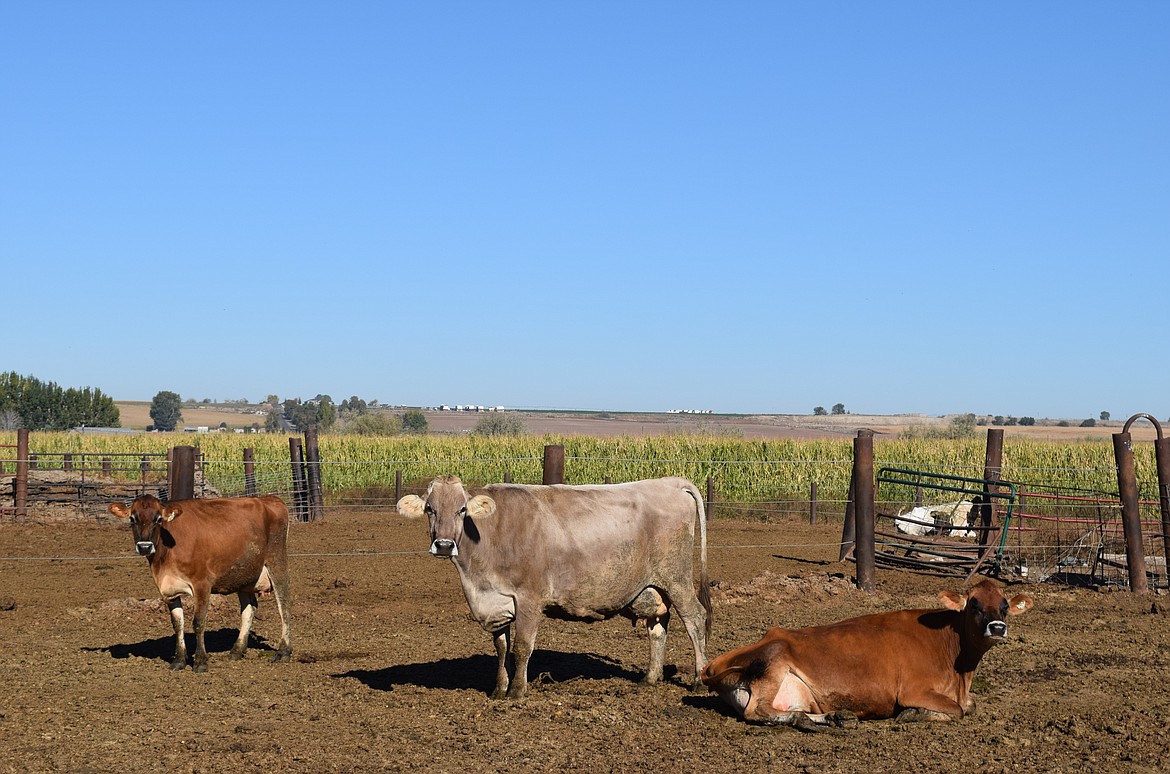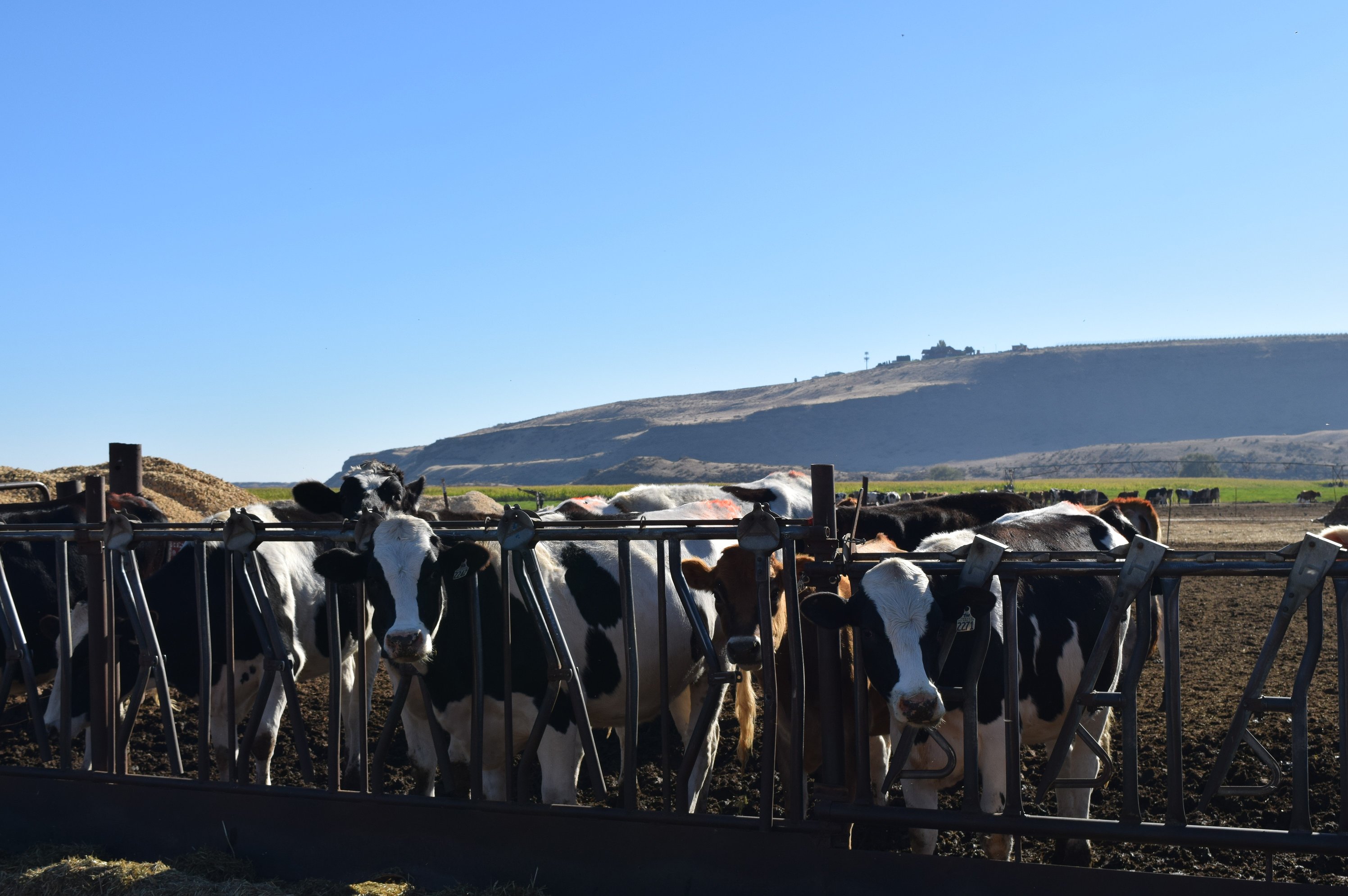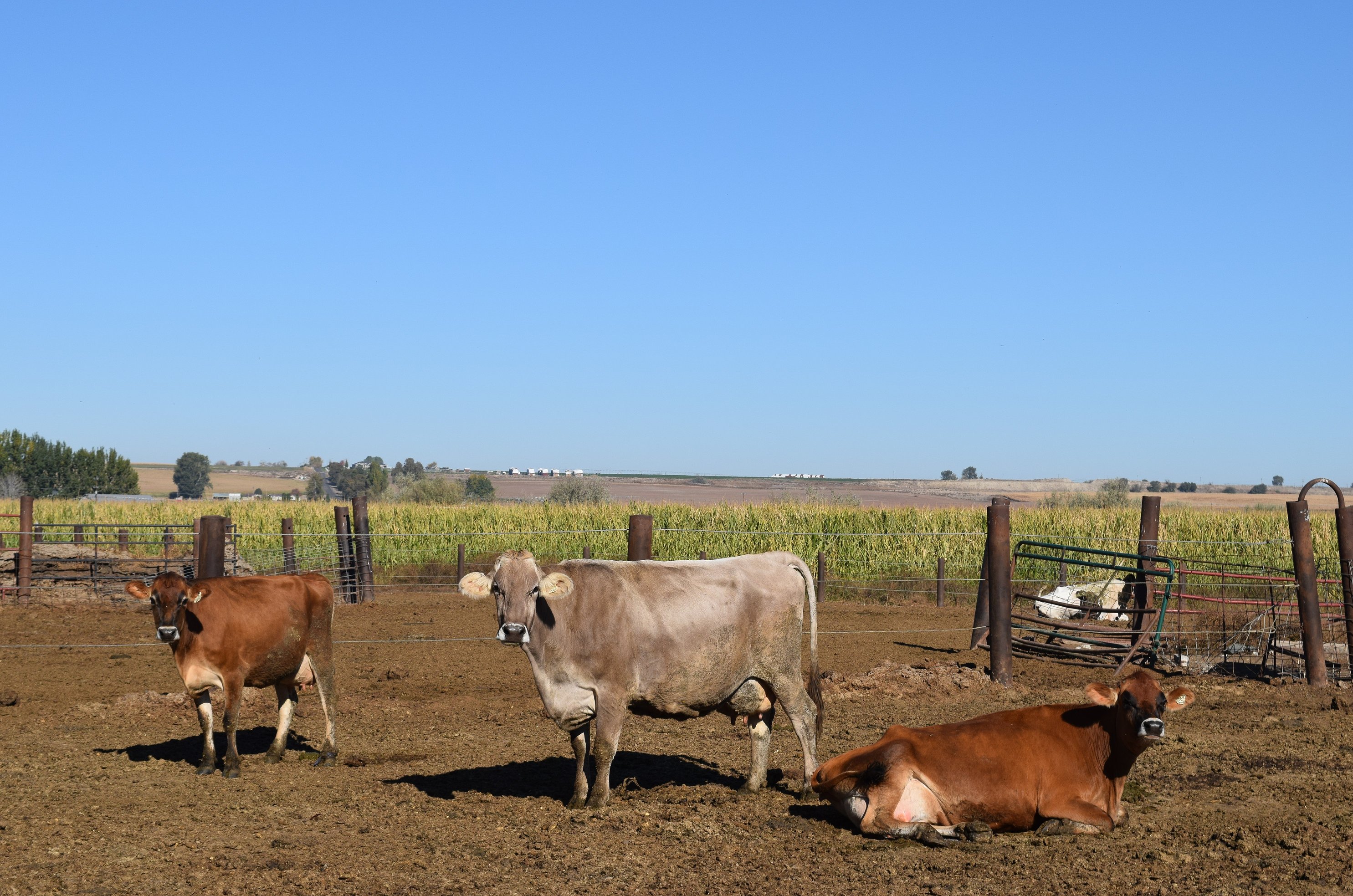Milk market: Dairy prices low, but trending upward
MOSES LAKE — Dairy farmers have had a rough summer, but things may be looking up, according to the Dairy Farmers of Washington, the Washington State Dairy Federation and Eastern Washington dairy farmers.
“The dairy industry landscape this last year, I think it’s kind of a mixed bag,” Dairy Farmers of Washington Executive Director Steve Seppi said. “I think the same inflation that’s hitting all consumers across all categories… it’s had a significant impact on the dairy industry.”
Seppi elaborated on the market.
“What that looks like on the farmer’s side of things is, you know, we saw good prices last year for the milk checks,” Seppi said. “This year, those have kind of receded a bit. We were well up over $20 last year. This year, they’ve come back under that $20 mark.”
According to the USDA’s National Dairy Comprehensive Report, the market price per hundredweight averaged across class II, III and IV milk was $17.33 in June, $17.05 in July, $18.67 in August and $19.15 in September.
“I think things are pretty tough right now,” Washington State Dairy Federation Executive Director Dan Wood said. “What the farmer gets paid for the milk is expected to go up a bit this fall, but I don’t think it’s going to outpace the increase in supplies and operations. So the margins are very difficult right now. The feed costs have gone up, the fuel costs have gone up, the power…if you’re growing your own feed, you can minimize some of that, but you’ve still got your fuel, you’ve got your maintenance and repairs, and all of that.”
Wood said he thinks it’s important that people understand that the price the farmer gets paid for milk is different than what the consumer sees in the store.
“A lot of that jump in the price of your gallon or half-gallon of milk is not going to the farmer,” he said. “The cost of processing and delivery and all of that has gone up as well.”
Seppi explained the milk price trends in more depth.
“You’ve seen a lot of folks, despite high milk prices last year, kind of barely break even,” Seppi said. “And then this year…milk prices have come down and those input costs have stayed high, which has had a pretty negative effect on dairy farmers’ profitability.”
Henry Benthem, a dairy farmer in Moses Lake, agreed that milk prices are low, but said he tries to stay positive.
“They’re trending upwards, as we speak, slowly, which, you know, I guess the dairy farmers that I know and I myself are always the ultimate optimists. Were like, ‘hey, it’s going up, it’s going to get better,’ even though we’re probably breaking even at best right now, if that.”
Othello dairy farmer Chris Baginski echoed Benthem’s statements.
“It was a rough summer,” Baginski said. “In fact at times we were below breaking even. But the milk market’s starting to pick up. Feed costs have been holding down, so it’s helped minimize the bleeding. We’re just kind of riding it out.”
Both Benthem and Baginski said they grow crops to offset their feed cost, something Seppi said is easier to do in Eastern Washington due to land availability. The cost of the feed the farms do buy is still very high, however.
Transportation and fuel are other aspects dairy farmers must deal with. Most do not process their own products, sending their milk to processors like Dairy Gold, which increases taxes affecting the farms.
“Dairy Gold is a co-op. They pick our milk up,” Benthem said. “This carbon tax hits us harder than most because, like I said, we buy a lot of our commodities and supplies and stuff. Our hauling cost goes up when we buy it since we’re part of the co-op…and fuel has gone up for them and then when they process (the milk), and then they ship it to the stores we cover that too, and then we use our own fuel.”
Baginski said LTI Milky Way, a bulk milk hauler, transports the milk to the processor.
“Fuel is going to go up,” Baginski said. “When that goes up, they put a surcharge on us that we can’t pass on to the consumer. It’s something we have to eat. That’s another frustrating thing. We’re the little guy on the totem pole.”
Wood said this level of fuel taxation and taxes meant to reduce the carbon footprint was not supposed to happen.
“There was supposed to be a five-year exemption for fuel use to transport agricultural products on public roads, and it didn’t happen,” Wood said. “I mean the law is very clear, so there’s a lawsuit on that, there’s a task force trying to figure that out. I mean, we’re getting more and more distributors who are saying they’ve stopped charging the carbon tax to the farmers, but those exemptions are not fully realized.”
Benthem said his biggest expense is feed, but he also has issues finding labor. Baginski said he has to compete with orchards in the region for laborers, and when he does find workers they have a high minimum wage in Washington, which the milk market prices do not reflect.
“The overall price of the milk is the same nationwide,” Baginski said. “So in Utah, their minimum wage is ten dollars, and all the hours they want to work, that’s beneficial for them, and that’s where the state of Washington is a little harder.”
Despite the struggles facing dairy farmers right now, optimism is trending upward with the market, according to Seppi.
“If demand continues to be high, the domestic market is strong, you expect some of these prices to rebound,” Seppi said. “The export market, despite the fact it’s been off kind of double digits from what it was last year, from a dollar perspective, I think there’s optimism that that will start to rebound.”
Wood said the WSDF has been looking at revenue options related to carbon reduction on dairy farms in state policy such as the Climate Commitment Act, which the WSDF is trying to help dairy farms in Washington benefit from.
“They sell the carbon credits, and then that money is invested into projects that reduce the carbon footprint,” Wood said. “But those things are long-term in the making, so it could be years, farm by farm, before there’s a revenue opportunity there.”
Wood put the various factors at play in the dairy industry into perspective
“Every commodity is experiencing consolidation or closures of farms,” Wood said. “(There are) fewer farmers and the farmer population is getting older, because it’s harder and harder to make money farming, and a lot of farmers are saying, ‘I’m not sure if I want this for my kids, or my grandkids … Policymakers need to have more of a sense of urgency about this and say, ‘how do we get revenue so people aren’t losing money farming?’ I mean, farmers need to make a good living, not just break even, because the rest of us can’t live without our farmers.”
Gabriel Davis may be reached at gdavis@columbiabasinherald.com. Download the Columbia Basin Herald app on iOS and Android.


